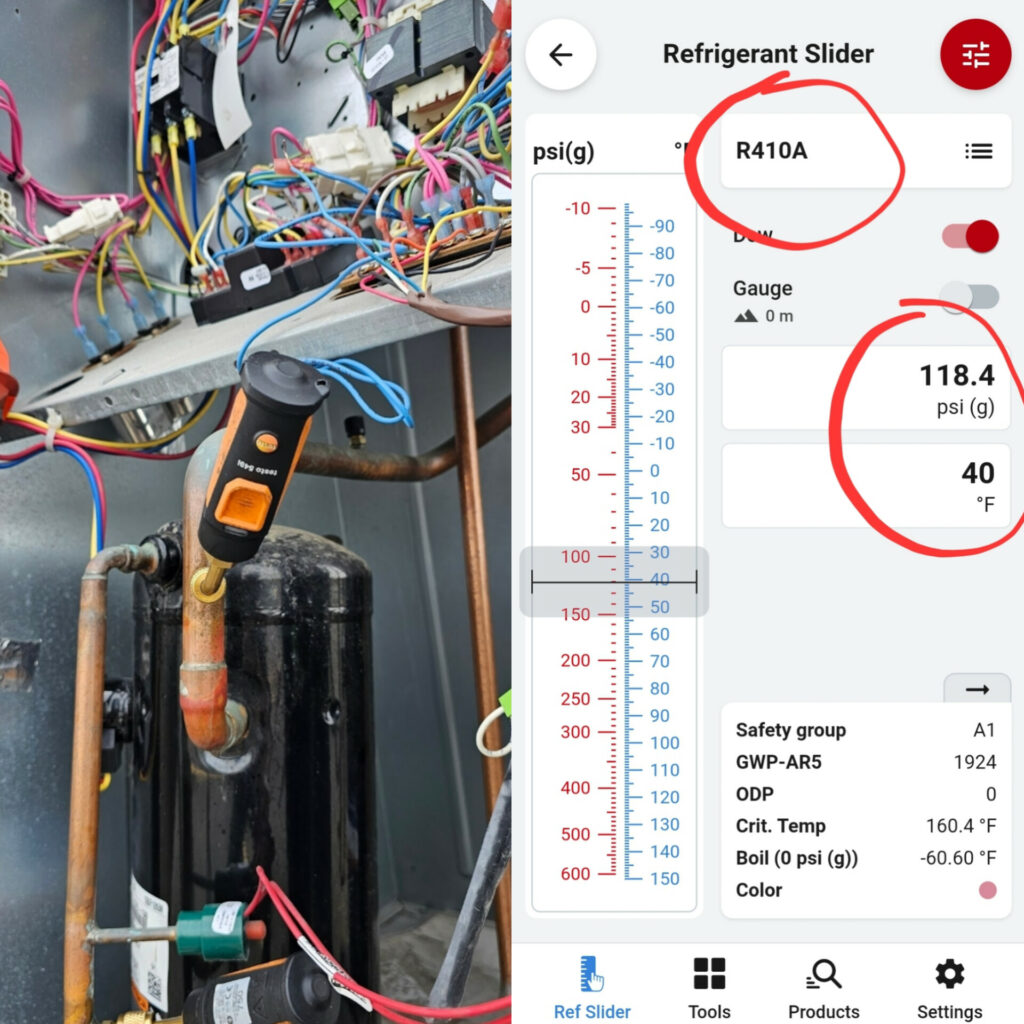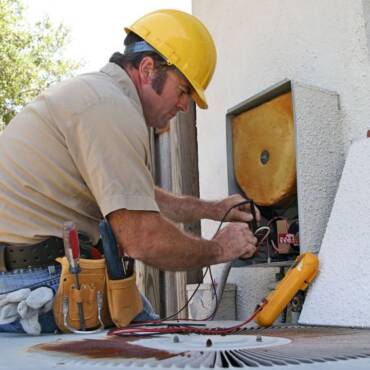The Problem
There are many HVAC helpers, apprentices and even experienced technicians that get tripped up on Delta T vs. Temperature Difference, or TD for short. They use them interchangeably or get them backwards. This article and embedded video will help explain the difference between these two terms.
In both examples, we will use the evaporator to simplify the explanation of air conditioning.
Evaporator TD vs Evaporator Delta T in HVAC.
In HVAC (Heating, Ventilation, and Air Conditioning) systems, “Evaporator TD” and “Evaporator Delta T” are terms often used to describe different temperature differentials associated with the evaporator. Understanding the distinction between these terms is important for diagnosing system performance and efficiency.
Evaporator TD (Temperature Difference)

This typically refers to the difference in temperature between the air entering the evaporator and the refrigerant inside the evaporator coil.
The formula for Evaporator TD is: Evaporator TD = Air Entering Temperature – Evaporator Refrigerant Temperature.
This measurement is useful for assessing the heat transfer performance of the evaporator. A typical value for Evaporator TD will depend on the system design but usually is approximately 35⁰F (20⁰C) for air conditioning systems.
For example, If the return air to the evaporator coil is 75⁰F and the SST (saturated suction temperature) is 40⁰F, there is a 35⁰F evaporator temperature difference or TD.
Evaporator Delta T (Temperature Change)


This refers to the difference in temperature of the air before and after it passes over the evaporator coil.
The formula for Evaporator Delta T is: Evaporator Delta T = Air Entering Temperature – Air Leaving Temperature.
This measurement indicates how much heat is being removed from the air by the evaporator.
Typical values for Evaporator Delta T will vary according to system specifics, but common ranges are 15°F to 20°F (8°C to 11°C).
Air that contains more moisture will have a lower Delta T as the coil is doing a lot of latent heat removal. Air that contains less moisture will have a higher Delta T as it’s doing more sensible heat removal.
Key Differences
Evaporator TD focuses on the temperature difference between the air and refrigerant. Evaporator Delta T focuses on the temperature change of the air as it passes through the evaporator.
Purpose
Evaporator TD is more about the efficiency and effectiveness of heat transfer between the air and refrigerant. Evaporator Delta T is concerned with how much cooling effect the evaporator is providing to the air.
Measurement Point
Evaporator TD involves measuring air entering temperature and refrigerant temperature. Evaporator Delta T involves measuring air entering and air leaving temperatures.
Understanding both measurements can lead to better diagnostics and optimization of HVAC systems. For instance, a lower-than-expected Evaporator TD might indicate inadequate refrigerant levels or issues with heat absorption. Conversely, an unusually high or low Evaporator Delta T could suggest airflow issues, such as a dirty filter or problems with the blower.
Find More Repair Work
By monitoring these parameters, HVAC professionals can ensure systems are running efficiently and effectively, providing optimal comfort and energy savings.
I hope the difference is now clear! Terminology in HVAC is very important. Executing each task properly can help identify any underlying issues and generate legitimate repairs for your customer.
Whether you require installation, repair, or maintenance, our technicians will assist you with top-quality service at any time of the day or night. Take comfort in knowing your indoor air quality is the best it can be with MOE heating & cooling services Ontario's solution for heating, air conditioning, and ventilation that’s cooler than the rest.
Contact us to schedule a visit. Our qualified team of technicians, are always ready to help you and guide you for heating and cooling issues. Weather you want to replace an old furnace or install a brand new air conditioner, we are here to help you. Our main office is at Kitchener but we can service most of Ontario's cities
Source link




Add Comment